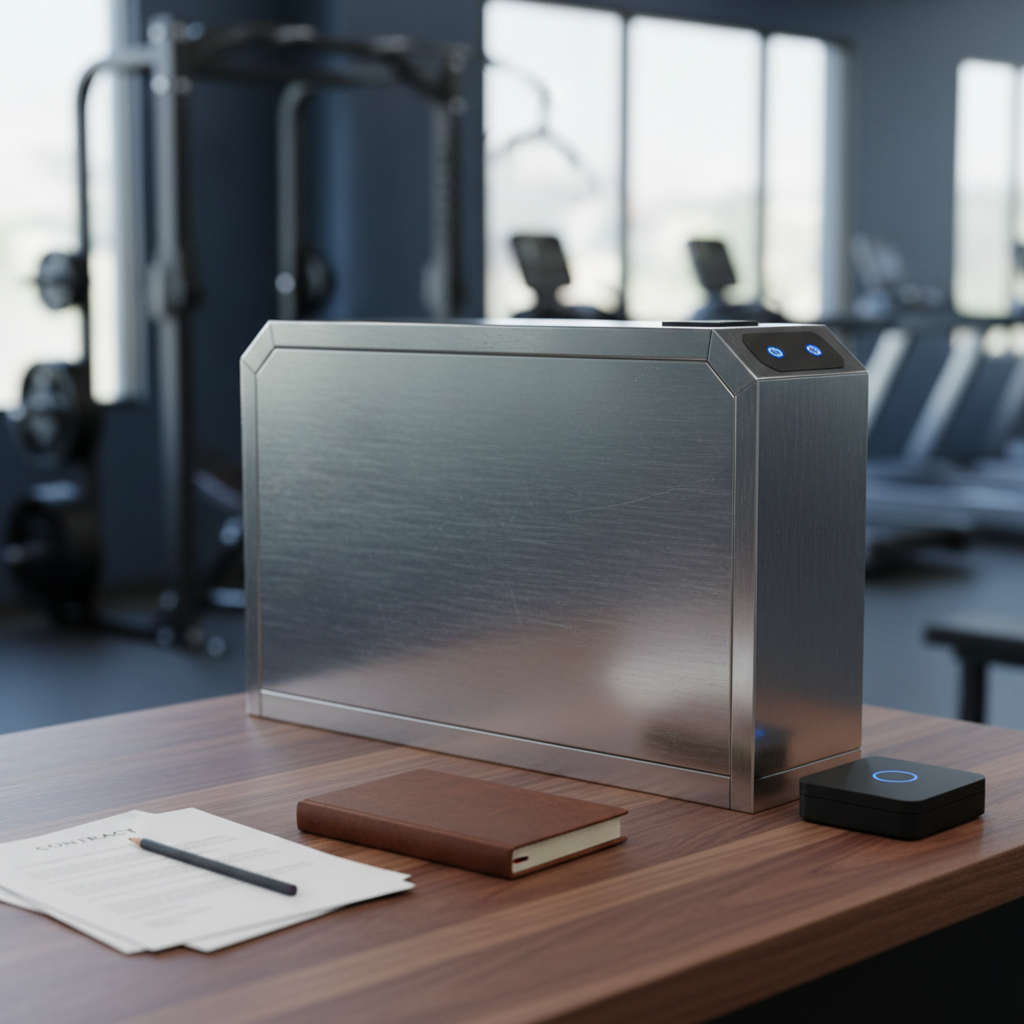GDPR-Compliant Biometric Entry for Gyms
Biometric systems like fingerprint scanners and facial recognition cameras are getting more popular choices for access control, but not so much yet for gyms in Europe. They make entry smooth and reduce the need for key cards or codes. But when you handle biometric data, you must follow GDPR rules carefully.
This guide explains how biometrics and GDPR fitness centers rules work together. You will learn what data protection steps to take and how to keep your gym safe while respecting member privacy.
What Makes Biometric Data Special Under GDPR
GDPR treats biometric data as special category data. This means it gets extra protection compared to regular information like names or phone numbers. Fingerprints, face scans, and other body measurements can identify a person uniquely.
The law considers this type of data sensitive because it cannot be changed. If someone steals a password, you can create a new one. But you cannot change your fingerprints or facial features.
Gym biometric data privacy rules require you to have a clear legal reason before collecting this information. You also need stronger security measures and must be more careful about how you store and use the data.
Legal Grounds for Processing Biometric Data
You cannot collect biometric data just because it seems convenient. GDPR requires one of these legal reasons:
- Clear consent from your members
- Legitimate business interests that do not harm member privacy
- Legal obligations in some specific cases
Gym member consent means each person must agree freely to use biometric systems. The consent must be specific, informed, and easy to withdraw.
Getting Proper Consent for Gym Biometrics
Biometric consent GDPR gym rules are strict. You cannot assume members will agree to biometric scanning. You must ask each person clearly and give them real choice.
Good consent practices include explaining why you want to collect biometric data, how long you will keep it, and what security measures you use. Members should understand they can use other entry methods if they prefer not to use biometrics.
You must also make it easy for members to change their minds later. If someone wants to stop using fingerprint scanners and GDPR gyms rules, they should be able to switch to key cards or codes without hassle.
Information You Must Provide
When asking for consent, tell members about your biometric data processing gym practices. Explain what type of biometric data you collect, why you need it, and how long you will keep it.
Members should know where you store their data, who can access it, and what happens if they leave the gym. This transparency builds trust and helps you meet legal requirements.
Privacy Impact Assessment for Gym Biometrics
Before implementing biometric access systems, gyms should carry out a Data Protection Impact Assessment (DPIA) to identify and mitigate potential privacy risks. This process helps you identify and reduce privacy risks.
The assessment looks at what could go wrong with biometric data and how to prevent problems. It covers technical security, staff training, and member rights. Many fitness center GDPR compliance programs start with this type of review.
You might discover that some biometric options create more privacy issues than others. Gym facial recognition GDPR requirements can be more complex than fingerprint systems, for example.
Common Privacy Risks
Privacy issues biometric data gym operations face include data breaches, unauthorized access, and function creep. Function creep means using biometric data for purposes beyond gym access, like marketing or behavior tracking.
Other risks include keeping data too long, sharing it with third parties, or failing to delete it when members leave. Your privacy assessment should address all these concerns.
Secure Storage and Data Protection
Biometric data storage gym GDPR rules require strong technical and organizational security measures. You cannot treat this information like regular membership data.
Secure biometric data gym systems use encryption, access controls, and regular security updates. Only authorized staff should handle biometric information, and they need proper training on data protection.
Consider the options on where to store the biometric data. Keeping data locally on gym premises might offer better control than cloud storage. But local storage requires you to manage all security aspects yourself.
Data Protection Officer Role
Larger gyms might need a data protection specialist. This person helps ensure your biometric systems follow GDPR rules and handles member privacy requests.
Even smaller gyms benefit from having someone responsible for data protection. This person should understand both gym operations and privacy requirements.
Managing Member Rights and Data Deletion
Gym member data protection GDPR rules give people control over their biometric information. Members can ask to see what data you have, request corrections, or demand deletion.
GDPR requirements apply when people leave your gym or withdraw consent. You must remove their biometric templates and any related information completely.
Set up clear processes for handling these requests quickly. Members should not have to wait weeks to delete their biometric data or switch to alternative access methods.
Data Retention Policies
Create a fitness center biometric policy that covers how long you keep biometric data. You cannot store this information forever, even if members remain active.
Most gyms delete biometric data within a reasonable time after membership ends. Some review and refresh biometric templates periodically to maintain system accuracy while minimizing data retention.
Alternatives and Risk Management
Consider alternatives to biometrics in gyms GDPR environments. Mobile apps can provide secure gym access control privacy without biometric data collection. This is where the industry is heading. Only downsides with Mobile compared facial recognition is the speed of passage. With mobile you might have to take it out of your pocket and unlock it. Also it is still possible, although not that common that you can borrow your phone to your spouse or a colleague to enable unauthorized access.
Some gyms use hybrid systems where members choose their preferred access method. This approach gives biometric benefits to those who want them while offering alternatives for privacy-conscious members.
Understanding risks of using biometrics in gyms GDPR context helps you make informed decisions. While biometric systems offer convenience and security, they also create compliance obligations and privacy responsibilities.
Compliance Monitoring
Biometric privacy practices need regular review. Technology changes, legal interpretations evolve, and your gym operations may shift over time.
Stay informed about whether is fingerprint scanning legal in gyms GDPR framework remains clear. Privacy authorities sometimes issue new guidance that affects how gyms can use biometric systems.
Understanding GDPR Compliance Requirements
GDPR compliant gym access control requires more than just technical security. You need clear policies, staff training, member communication, and regular compliance reviews.
GDPR compliant facial recognition gym systems face additional scrutiny because facial data reveals more information than fingerprints. Consider whether these systems match your actual security needs or create unnecessary privacy risks.
Document your compliance efforts carefully. If privacy authorities investigate or members file complaints, you need evidence showing your gym follows data protection rules properly.
Potential Consequences
GDPR violation fines can be significant, especially for improper handling of special category data. Beyond financial penalties, privacy breaches damage member trust and gym reputation.
Focus on prevention rather than reaction. Good biometric data privacy practices protect both your members and your business from serious problems.
Making Informed Decisions
Biometric systems can enhance gym security and member experience when implemented thoughtfully. GDPR does not ban biometrics, but it requires careful attention to privacy rights and data protection.
Consider your gym size, member preferences, and technical capabilities when evaluating biometric options. Smaller gyms might find that simpler access control methods meet their needs without creating complex compliance obligations.
Remember that gym access control privacy extends beyond legal requirements. Members trust you with sensitive personal information, and that trust forms the foundation of successful gym operations.



